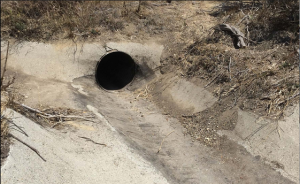
Originally Published on the ECOreport
By Roy L Hales
July 12, 2015 (San Diego’s East County) - El Capitan beach reopened two days ago. A news team visiting the site of California’s worst oil spill in 25 years reported no obvious signs of the catastrophe. There was a sea lion sporting in the ocean and birds on the shore. The park superintendent told them “You may still see the occasional tar ball or two, which isn't uncommon for the natural seeps here on the south coast." The reporter claimed the beach was better looking than ever. So how damaging was the Santa Barbara spill?
 The Land
The Land
More than 100,000 gallons escaped from Plains All American pipeline 901 before it was shut down on May 19. The beaches at Refugio and El Capitan, a little more than twenty miles north of Santa Barbara, both had to be closed.
As of June 21, 5,616 cubic yards of oiled soil, 960 cubic yards of oiled sand and 795 cubic yards of oiled vegetation had been carted off to the waste disposal site.
Though the clean-up is officially finished, a residue remains. The stream of oil that gushed through the culvert north of Highway 101 left a dark grey residue. Most of that has been removed but, as you can see in the "after" image to the left, there is still a residue. A similar stain remains in the after image from the bluff above Refugio Beach.
According to Phyllis Grifman, associate director of the USC Sea Grant Program, this residue can cause lasting harm by “smothering” organisms in what had been a pristine eco-system.
“You can’t ever get it all out. There are so many nooks and crannies where the oil can hide,” she told the Guardian.
The Ocean
An estimated 21,000 gallons of oil entered the ocean and only 14,267 gallons of an "oil water mix" were subsequently recovered. There has been no visible remnant on the water for weeks. Greg Helms, from Ocean Conservatory, explained where some of the crude went:
Spilled oil on the sea surface that is not captured by booms and skimmers will undergo changes as it’s agitated by waves and currents, and weathered by wind and sunlight. Uncollected oil begins to degrade and form the orange emulsion “mousse” that is a familiar visual from past oil spills. During this weathering process, some of the oil will collect in low spots and around reefs and rocky outcrops. This brings the smothering and oiling effects of the spill to the seabed, where the bulk of the near shore ocean’s animals are located. This sub-surface oil is less visible and more difficult to clean up, and its effects may be the most persistent and profound posed by this tragic incident.
The weathering of spilled oil releases especially toxic aromatic hydrocarbons that can pass through the gills of fish, and enter nerve fibers causing paralysis. Chemical compounds that weather slowly may persist in the environment for months or years. Some will remain suspended in the water, later forming tar balls and “pancakes” that can continue to foul beaches and shorelines for years to come. Some will sink to the sea floor, where exposure of this decaying oil will threaten the growth and reproductive success of bottom dwellers such as sea urchins and sea stars. Oil buried in the sediment layer decays more slowly and can be re-released over time.
Ocean currents, and tidal action, carried some of the oil away. Globs with the chemical "fingerprint" of pipeline 901 have been recovered from Southern Californian beaches as far away San Clemente, 170 miles to the south in Orange County. Plains All American says that a week after the spill, "a mix of Line 901 released oil and oil from other sources reached beaches in Ventura County and in Los Angeles County from Santa Monica to Redondo Beach." Fox News followed a scientist from the non-profit Heal the Bay as she walked along Venice Beach, in Los Angeles county. They found a glob every few feet.
Fishermen are still not permitted to work in an area that stretches for 161 miles square miles.
Chris Voss, President of the Commercial Fishermen of Santa Barbara, is concerned about the long term effects on fishing and on the industry's reputation.
He told a local media outlet, "I think there's going to be significant long-term impacts to those fisheries down the road."
Birds & Animals
Teams collected 414 birds and mammals, 295 of which were already dead. Some of the most numerous fatalities reported from specific species were 81 California Sea Lions, 29 Common Murre, and 25 Brown Pelicans. There were also 13 dead Dolphins.
Those were only the creatures who were picked up on the beaches. No one knows how many sunk to the bottom of the ocean, or were so weakened that they became easy prey, or whose lifespans were shortened.
There are no tallies for fish fatalities, or the damage to marine vegetation.
How Damaging Was The Santa Barbara Oil Spill?
Watching KETY's report, it is easy to see why the reporters were impressed by the clean-up at El Capitan Beach. The park has been given a face lift. We don't really know the full extent of the damage on land or sea.
Photo Credits:
San Clemente Pier by Loco Steve via Flickr (CC BY SA, 2.0 License)
“After” Picture of the Drainage Culvert North of HWY 101- Courtesy Refugio Response Joint Information Center







Recent comments